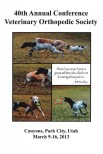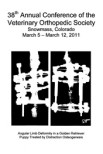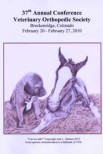OBJECTIVE: To estimate the prevalence and risk factors for a diagnosis of cranial cruciate ligament (CCL) disease in dogs and to describe the management of such cases attending primary-care veterinary practices.
STUDY DESIGN: Historical cohort with a nested case-control study.
SAMPLE POPULATION: Nine hundred and fifty-three dogs diagnosed with CCL disease from 171,522 dogs attending 97 primary-care practices in England.
METHODS: Medical records of dogs attending practices participating in the VetCompass project that met selection criteria were assessed. Univariate and multivariate logistic regression methods were used to evaluate association of possible risk factors with diagnosis of CCL disease.
RESULTS: The prevalence of CCL disease diagnosis was estimated at 0.56% (95% confidence interval 0.52-0.59). Compared with crossbred dogs, Rottweilers, West Highland White Terriers, Golden Retrievers, Yorkshire Terriers, and Staffordshire Bull Terriers showed increased odds of CCL disease diagnosis while Cocker Spaniels showed reduced odds. Increasing bodyweight within breeds was associated with increased odds of diagnosis. Dogs aged over 3 years had increased odds of diagnosis compared with dogs aged less than 3 years. Neutered females had 2.1 times the odds of diagnosis compared with entire females. Insured dogs had 4 times the odds of diagnosis compared with uninsured dogs. Two-thirds of cases were managed surgically, with insured and heavier dogs more frequently undergoing surgery. Overall, 21% of cases were referred, with referral more frequent in heavier and insured dogs. Referred dogs more frequently had surgery and an osteotomy procedure.
CONCLUSION: Breed predispositions and demographic factors associated with diagnosis and case management of CCL disease in dogs identified in this study can be used to help direct future research and management strategies.
Epidemiology of cranial cruciate ligament disease diagnosis in dogs attending primary-care veterinary practices in England (pages 777–783)
Journal
Taylor-Brown FE, Meeson RL, Brodbelt DC, Church DB, McGreevy PD, Thomson PC, O'Neill DG. Vet Surg. 2015 Jun 29.









